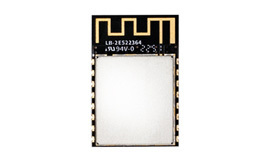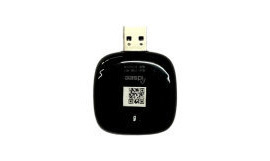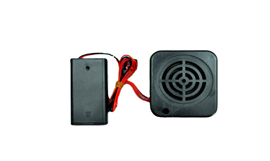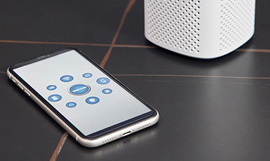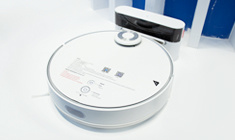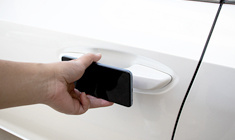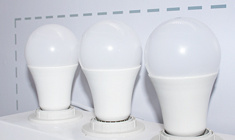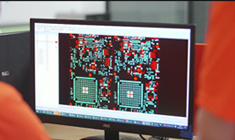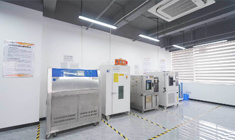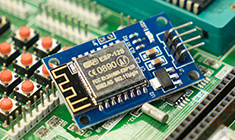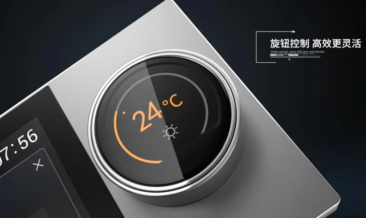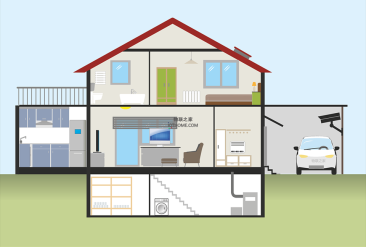
Indoor location technology: UWB, Bluetooth, RFID and WIFI -- Who will be the star?
Release Time:
2020-08-29
The more popular indoor positioning technologies include WIFI , Bluetooth, RFID , and UWB , all of which require the deployment of positioning base stations, WIFI requires the deployment of APs , Bluetooth requires the deployment of Bluetooth base stations or iBeacon , and RFID requires the deployme
The more popular indoor positioning technologies include WIFI , Bluetooth, RFID , and UWB , all of which require the deployment of positioning base stations, WIFI requires the deployment of APs , Bluetooth requires the deployment of Bluetooth base stations or iBeacon , and RFID requires the deployment of RFID Readers . The positioning distance is relatively close, but the accuracy is completely different.
From the positioning principle, it can be divided into three types : RSSI ranging, TOF ranging, and TDOA ranging . The three methods correspond to different precisions.
WIFI positioning
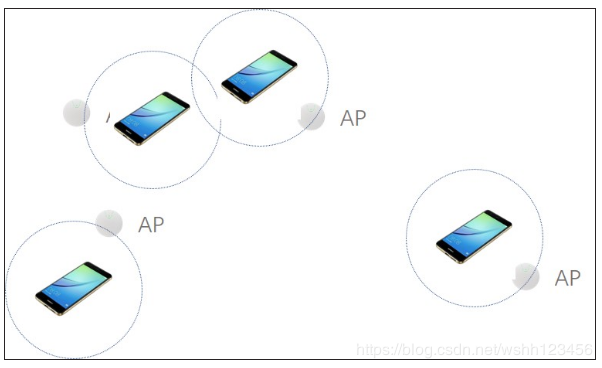
WIFI positioning principle
WIFI positioning adopts the RSSI positioning principle, so the accuracy is relatively low. The construction of WIFI network is not for dedicated and positioning services, because the transmission rate of WIFI network needs to reach the transmission rate of WIFI and the density of WIFI base station or AP deployment is very high, so this The high density makes it possible to locate WIFI .
In the indoor situation, the mobile phone can often receive a lot of WIFI SSID information . When the mobile phone and the WIFI base station are communicating, the mobile phone does not need to connect to the Wi-Fi AP . All Wi-Fi terminals send a probe_request frame between the connection APs , traverse all channels in the space, and wait for the AP to return . Probe Response frame. During this interaction process, the terminal will broadcast its own MAC address in the message, and the AP or WIFI base station can receive the message packet with the MAD address and signal strength of the mobile phone. Because the signal strength value of each AP is clear, RSSI and other methods can be used to locate.
That is to say, as long as your mobile terminal turns on Wi-Fi , it will have one or repeated frame listening and response with the AP in the space in the background . These frame listening will reveal your approximate location in the space.
Because when the mobile terminal searches, it is equivalent to uploading the positioning information of the mobile phone, so the WIFI base station or AP locates according to the fingerprint information of the mobile phone. It is the positioning engine on the base station or the positioning server behind that performs the positioning calculation, and finally obtains the relative position coordinates. The easiest way is to directly use the location information of the WIFI base station as the location information of the mobile terminal. If several base stations can collect the collected fingerprint information at the same time, some weighted algorithms based on the RSSI field strength can be used to calculate the relative position . The accuracy mainly depends on the density of WIFI base stations or APs , and there is very little room for optimization in positioning algorithms. The positioning accuracy is low and there is no orientation. The general accuracy is about 5 meters.
WIFI positioning defect
The main defect of WIFI positioning is that Apple mobile phones cannot be used, and Apple has not opened the corresponding interface.
Secondly, the workload of WIFI positioning on the location map is relatively large. WIFI positioning is to obtain relative coordinates, that is, the coordinates of the mobile phone relative to the WIFI base station or AP . After the WIFI base station or AP changes, the map needs to be corrected.
Thirdly, the defect of WIFI positioning is that the quality of WIFI base stations or APs is unstable, so that the quality of positioning cannot be effectively guaranteed.
Advantages of WIFI positioning
The advantage of WIFI positioning is that WIFI is widely deployed. Currently, as the most important means of wireless transmission, WIFI has the largest deployment in various indoor occasions. Therefore, WIFI is ubiquitous. In occasions that do not require high precision, WIFI After the construction of the data transmission network is completed, the WIFI positioning function can be activated by assuming the positioning engine service .
The second advantage of WIFI positioning is low cost. The chip module of WIFI is already about 10 yuan, and the price of WIFI base station and AP is less than 100 yuan, and it can perform data transmission and positioning functions, so it can meet low-cost large-scale Extended needs.
The third advantage of WIFI positioning is that mobile terminals can be used, omitting the cost of terminal deployment. Therefore, WIFI positioning is the cheapest among several indoor positioning solutions.
WIFI positioning application scenarios
It is mainly for low-precision scenarios, such as the positioning of scenic spots, large shopping malls , shopping malls, entertainment venues, company staff WIFI attendance, WIFI sign-in, and exhibition positioning. Some of them are also used for coal mine positioning after transformation. Generally speaking, it is used in areas where the positioning demand is not strong, the positioning function is auxiliary, and the investment is small.
Bluetooth positioning
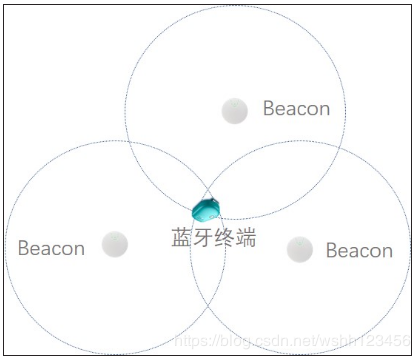
Bluetooth positioning principle:
There are two main ways of Bluetooth iBeacon positioning: based on RSSI ( Received Signal Strength Indication ) and based on positioning fingerprints, or a combination of the two. The biggest problem based on distance is that the indoor environment is complex, and Bluetooth, as a 2.4GHZ high-frequency signal, will be greatly interfered. In addition to various reflections and refractions in the room, the RSSI value obtained by the mobile phone does not have much reference value ;
At the same time, in order to improve the positioning accuracy, the RSSI value has to be acquired multiple times to smooth the result, which means an increase in time delay. The biggest problem with location-based fingerprints is that the labor and time costs of obtaining fingerprint data in the early stage are very high, and database maintenance is difficult. And if the mall adds new base stations or undergoes other modifications, the original fingerprint data may no longer be applicable. Therefore, how to make trade-offs and trade-offs among positioning accuracy, delay and cost has become the core issue of Bluetooth positioning.
At present, the mainstream Bluetooth positioning accuracy in the market is within 2 meters for 70% of the locations , and some companies can achieve 90% of the locations within 2 meters. At present, the mainstream Bluetooth positioning technology in the market is based on the triangulation positioning algorithm, which obtains the signal strength of the surrounding Bluetooth base stations through the mobile phone, and then uses other auxiliary methods such as weighted average algorithm, time weighted algorithm, inertial navigation algorithm, Kalman filter algorithm, Gaussian filtering algorithm to calculate the current position .
Bluetooth positioning flaws
Compared with WIFI positioning, Bluetooth positioning needs to deploy Bluetooth beacons, so it is necessary to build a Bluetooth network. Compared with the cost of network construction and network maintenance, the cost of network maintenance will increase a lot
In terms of positioning accuracy, the Bluetooth positioning algorithm has no advantage over WIFI , so the accuracy is related to the density of Bluetooth beacons, and the accuracy is about 1-5 meters.
Advantages of Bluetooth positioning:
Bluetooth's iBecon is dominated by Apple, so compared with WIFI positioning, it is much taller. The obvious advantage of Bluetooth positioning is that its power consumption is relatively low, and the power consumption of Bluetooth is lower than that of WIFI . If you deploy a dedicated positioning network In terms of system reliability, it is stronger and more stable than WIFI networks that take into account both data transmission and positioning.
Bluetooth positioning can also use the Bluetooth function of mobile phones and other devices, which saves the deployment of some terminals, but because the Bluetooth function of the user's mobile phone is generally turned off, this advantage is limited.
Bluetooth positioning application scenarios
To a large extent, it is highly overlapping with WIFI positioning. Bluetooth terminals are mostly Bluetooth bracelets, which are mainly used in shopping mall positioning, hospital positioning, item anti-lost, shopping mall positioning, entertainment venue positioning, WeChat shake, etc. , are non-rigid demands.
RFID positioning
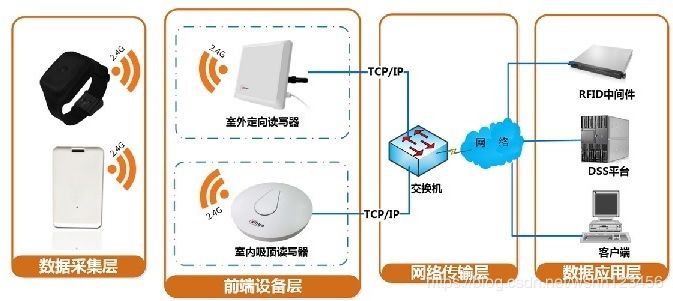
RFID positioning principle:
RFID is divided into active RFID and passive RFID , so there are many ways of positioning. However, the algorithm is also an RSSI energy algorithm: the RFID reader that adjusts the reading and writing distance by adjusting the emission energy , so that if the RFID tag is farther away from the reader , the energy will be smaller, and vice versa, the closer the RFID tag is, the positioning can be performed by setting the threshold.
According to the delay from the active RFID tag sending the signal to the reader reading the tag information to assist in judging the location information of the tag, the longer the delay, the farther it is, and vice versa. The relatively new technology also uses the TDOA algorithm, which is generally used in RFID in the UHF frequency band , but it is rarely used and the cost is high.
Advantages of RFID positioning
The advantage of RFID positioning is that it is low in cost and can be deployed on a large scale.
RFID provides active and passive solutions. The passive solution has no power supply problem, and the active solution can also achieve extremely low power consumption, and it can last for several years with a button battery.
RFID base station equipment is relatively rich, and there are many high-power equipment and low-power card reader products, which are suitable for networking in various occasions.
Disadvantages of RFID positioning
To meet the same accuracy requirements, compared with UWB positioning, the deployment of RFID base stations or readers is relatively complex and the number is large.
RFID positioning application scenarios
RFID equipment is relatively stable, so it is widely used in the field of positioning. Because the price of RFID positioning terminals and RFID tags is extremely low, they can be used on a large scale. Mature applications and good prospects for use.
UWB positioning
UWB positioning principle
The TDOA algorithm is used for positioning, and the UWB positioning requires the support of 3 base stations.
Advantages of UWB
At the same time, it has the dual advantages of real-time positioning and precise positioning, and the delay time of positioning is much shorter than other indoor positioning technologies such as Bluetooth positioning and WIFI positioning. The accuracy can reach about 10cm , which is indoor high-precision positioning.
Build a dedicated positioning network, so the network has good reliability and robustness.
positioning defect
The disadvantage of UWB is that it needs a complete positioning network, and it needs the support of three positioning base stations at any positioning point. The UWB positioning algorithm is based on three-point positioning. If the number of base stations is reduced, the positioning accuracy will be greatly affected. .
Secondly, the disadvantage of UWB is that there cannot be obstacles that block the radio transmission. Small obstacles will not have an impact, because the radio will diffract, but if it is completely blocked, it will lead to the reception of the positioning base station, so that the positioning accuracy will be greatly improved . Decline.
Thirdly, UWB positioning needs to deploy a positioning network, so the cost is relatively high.
UWB Positioning Application Scenarios

Guangdong Joinet IOT Technology Co.,Ltd
Manufacturing Base:
Joinet Technology Park,No. 168 Tanlong North Road,Tanzhou Town,Zhongshan City,Guangdong Province,China
Pre Sales Hotline:19966308713 13823973022
Switchboard:0760-8663 0003 (transferred) 523
Pre Sales Email:sw@znaiot.com


Contact Us:
Looking forward to your call anytime



